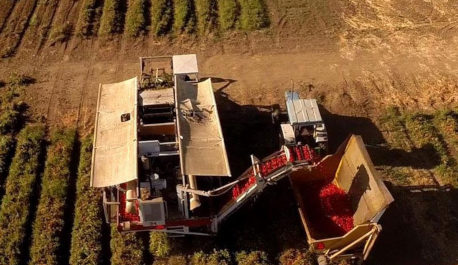Drip Irrigation and Soil Health in California

Processing tomato harvest. Photo: University of California
While subsurface drip irrigation is widely considered beneficial for crop yields through increasing efficiency of water and fertilizer use, unknowns remain regarding its consequences for soil health–some of which are mediated by farmer’s choices of crop management practices to accommodate their drip irrigation systems. Understanding how farmers approach crop management differently when using drip irrigation can help us more broadly understand the role of drip irrigation in benefiting or constraining soil health.
“Soil health is close to the primary aspect on our [farm] decision making. We think of trying to do all our ops—whether it’s water, tillage, nutrient introduction, rotation—asking is there a consideration to how is it for the soil. And what we’ve found is if we give a lot of thought to all the ways that we nudge soil health, we have the soil and the life in the soil doing our problem solving.” —Farmer participant
A team from the Scow Lab implemented a semi-structured interview protocol with processing tomato growers throughout the California Central Valley. Questions broadly addressed what practices farmers use, why they use them, how they navigate crop and soil management trade-offs imposed by the use of drip irrigation, and how they view the role and importance of soil health in the success of their farm operations. An iterative thematic coding process was then used to identify and categorize significant statements, which were grouped according to theme and interpreted to produce a composite description of farmers’ perspectives.
Funding
California Tomato Research Institute